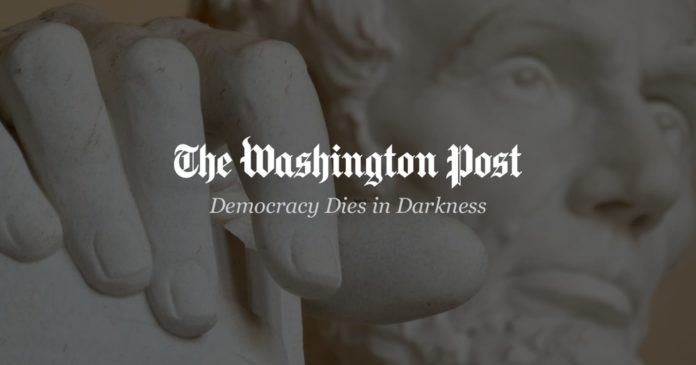
DR. LEWIS: Thank you, Dan. Hello.
MR. DIAMOND: Let’s start with some local perspective on the global health fight. The United States currently represents about one-third of global monkeypox cases. Why do you think the case count in the United States is so high and has been going up so rapidly compared to other countries?
DR. LEWIS: Well, the case count has been going up rapidly in a number of countries if you see at different points in time. So, the first countries where cases really rose very quickly were of course the United Kingdom, Spain, and Portugal, and that was followed by Canada and then France as well. And Brazil is concerning now. So yes, the United States of America is a country that has a concerning situation at the moment. It’s not the only one, though.
MR. DIAMOND: I think part of my question, Dr. Lewis, is we are coming off two years where the United States has become the global leader in confirmed COVID cases. Now we’re the global leader in confirmed monkeypox cases. You’re a global health expert. What are we doing wrong here in the States?
DR. LEWIS: I think we’d prefer to talk about what we’re doing right. So, the important things are information, communication, testing, contact tracing. There are many different aspects of the response that we can talk about. And those are accessible in different ways in different countries. And so different countries may have challenges regarding testing, for example, and the United States is one country that has in fact responded by expanding its testing capacity from public health laboratories only to also include commercial laboratory companies.
So, this–every country has to find its own way; it has to find following the recommendations of the World Health Organization issued following the public health emergency of international concern. And there are many different strategies. It’s only by employing all strategies together. And this may be one of the challenges, because in countries that have a federal system of states, provinces or other, you know, ways in which they’re–the jurisdictions happen in different levels, then it’s not always as straightforward as for countries which have one health system, for example.
MR. DIAMOND: We do have that fragmented system here in the States. So, to your point, as you’re looking around the globe, and you’re seeing different countries employ those different strategies, and hopefully all of them, is there a country that you might hold up? Is there an example of a strategy that you’d like to see replicated in more places around the globe?
DR. LEWIS: There are three things that are critical in this outbreak. The first is information, the second is action, and the third is evidence gathering. So, in terms of information, it’s really important for those who are most at risk to have the information they need to have, which is why we’ve talked a lot about fighting stigma, reducing stigma, avoiding discrimination for all countries, but also for countries where certain activities may be criminalized, for example, reaching people with the information they need to appreciate their own risk and protect themselves.
The second one is action. So, there are many things we can talk about in action. We’ve already touched on several of them: Rapid detection of cases, isolation in the first instance, contact tracing; again, information to contacts; and where available, vaccines and treatments.
And then last one is evidence. There’s a lot we still don’t know about what’s happening. So, although monkeypox is not a new disease, and orthopoxviruses are not new–smallpox was one of those–there’s still a whole lot we have to learn. So, we can’t assume that we have all the answers already. We need to collect the evidence and the information we need to continue to fine tune our response.
MR. DIAMOND: Let’s use the rubric that you just suggested, so communication, evidence in the middle a strategy. Let’s talk a little bit about communication. Monkeypox has been spreading disproportionately in gay men with multiple sexual partners. Dr. Tedros, the head of the World Health Organization, last month issued a warning calling on gay men to temporarily limit the number of sexual partners. In retrospect, Dr. Lewis, do you wish that those warnings had come earlier, had been more direct, to stave off potential outbreaks earlier this summer?
DR. LEWIS: We move with the information as fast as we can at the time that we can release that information or share it. So, in the early days, it wasn’t entirely clear, but it became clear quite quickly, that those who are at risk are those who have multiple sexual partners, for example. It’s not the fact that someone is gay puts them at risk. There are, you know–it’s perhaps having–there were some amplifying events where people met together in large gatherings, social gatherings or smaller parties where there’s sex on premises.
It’s really now we’re trying to understand better that it’s about–it’s about multiple contacts, casual contacts. And contact tracing has been difficult for some countries for some of those reasons. So the importance of the communication aspect is to really appreciate, you know, what is an individual’s risk. Can each individual really appreciate? Is there a way that I can reduce my risk by reducing the number of partners, by changing the activities that we engage in, by changing some of the very sexual activities that we engage in?
MR. DIAMOND: Here in the United States, I think there are more than 95 percent of cases in gay men. Is that roughly the case around the globe? Are you seeing a different trend in the data that you have?
DR. LEWIS: No, the information we have has been very consistent, and it’s that 99 percent of cases are still in men. When you think about it, that’s quite extraordinary for an infectious disease. We don’t normally see that kind of gender disparity in an infectious disease. So, on the one hand, there are concerns that some of it may be under ascertainment, that maybe testing is only being offered to certain groups of people, and that may be part of–part of it. But we still think that based on the data we have, and based on more data that’s coming out all the time, including among publications, scientific publications of cases, that it’s still the vast majority of cases are among men, and of those 98 percent are still among men who have sex with men. Again, we’re concerned about under ascertainment, a lack of access to tests.
But this is an important finding. And we really tried to describe what it is we’re seeing in an outbreak. But that doesn’t mean that–you know, that this group is responsible for the outbreak. It doesn’t mean that they should be stigmatized. It’s really about offering services where they need to be offered and to whom they need to be offered.
MR. DIAMOND: This issue of trying not to stigmatize it is very much on our mind as health reporters and also on our mind here in Washington, D.C. There was recently an attack not too far from where I’m sitting on several gay men who were accused of carrying monkeypox. They were badly beaten. How do you balance warning gay men that they’re at elevated risk of this disease against the fear of inciting hate or even violence?
DR. LEWIS: It’s certainly been a tight rope that all public health agencies and all reporters such as yourself have been walking since the beginning of this outbreak. What’s critically important is engaging with the communities themselves. So, at WHO we do that at global level. We have regular touchdowns with representatives of LGBTQ associations, various groups of, you know, people who advise us about the language to use, about the things to talk about. But also, those are the same groups that should be contacted at every level–at every level of the response–national, federal, local, community. And so they will tell you, they will tell us–they do tell us, you know, what are the–what are the channels of communication that are helpful, what are the messages that are helpful, what are the messages that may actually push people away, which is the last thing we want to do.
So, for example, right from the beginning, WHO was working through messaging platforms that were not necessarily on the public website to begin with. We’re putting more and more information on the public website now. But at the beginning, we were working through meetup–through meeting apps, Grindr, and others. We were working through associations, organizers of pride festivals. Again, it’s not the pride festival itself, which is a celebration of identity, but the events that may happen on the on the outskirts of a festival. So even today, you know, we’re becoming a bit more comfortable talking about the situations such as saunas, bathhouses, places where there’s sex on premises as part of the activities, because this is where the risk is. As I said before, it’s not being gay that represents a risk. It’s the activities where one might encounter others who may not even know that they’re infected, and that they may pose a risk to several people at the same time. And that explains why this can behave in the way that it does and in an amplifying manner, where you have many cases occurring at the same time from a single large event.
MR. DIAMOND: Maybe one more question on the messaging and thinking about reaching the gay community. Forty years ago, HIV was originally seen as a gay man’s disease. That’s arguably why we missed or at least a big reason why we missed opportunities to try and stop that disease in its tracks. Now, it’s 2022, a different virus, a different time. But, Dr. Lewis, are there vestiges of that legacy with HIV that we are doomed to repeat in some way with monkeypox?
DR. LEWIS: People are concerned about that legacy and the concern that mistakes may be made or mistakes are being made. But there are of course lessons to be learned and advantages. So, for 40 years, people have worked on HIV prevention and control. For 40 years, people have worked on access to antiretroviral therapy. For 40 years people, have worked on community organization, community engagement, risk communication, and working with groups of people, including now especially young people who don’t have that memory of that–of that era 40 years ago. So that is–that is the positive. We build on that and learn the lessons from the stigmatization of people at that time, because at that time, what happened is a lot of it was driven underground, that people were, you know, feeling stigmatized and would not necessarily seek out information.
I think today what we’re really trying to do is provide the information where it needs to be, which is those–for those who are at risk. This also includes members, family members, household members. So, it’s not exclusively men who have sex with men or people who have multiple partners. There can be others who have risks–for example, sex workers or family members of people who are just living in the same household. You’re living in close proximity. And these–you know, these are situations where people also need to be aware that others may be at risk. It’s not the majority of the situation right now, and it’s not something we want everybody to be very worried about, but it’s important to again appreciate your own risk so that you can lower your own risk.
MR. DIAMOND: In terms of household members, I believe I read something in the Lancet over this weekend about a pet dog, a greyhound in Europe, that contracted monkeypox from its owners. Does the WHO have any more evidence on animals picking it–picking up monkeypox from owners, any transmission that way?
DR. LEWIS: So far, no. So this has been a theoretical risk to up until now. We know–we know all about the prairie dog outbreak, a monkeypox outbreak in the U.S. linked to prairie dog pets, for example. But there was no human to animal transmission during that outbreak. It was all persons who were infected by contact with these new pets that they acquired in several states from a central source and the pets had been infected. So, this is the first incident that we’re learning about where there is human to animal transmission. This has not been reported before, and it has not been reported that dogs have been infected before. So, on a number of levels, this is new information. It’s not surprising information, and it’s something that we’ve been on the watch out for.
So, we do have–within our own ranks, we have people who are experts in One Health and animal health and working with the organization World Organization for Animal Health, for example, and the Food and Agriculture Organization through the One Health approach. So, we are working very much with those partners to address this. And so the messaging that has been given up until now was, you know, that pets should be isolated from their–from the family members who may be infected. This has been an example of precautionary approach, precautionary messaging, because we didn’t have the information that this had ever happened before. It had not been recorded before. But it was a reasonable cautious message to give. And now we have the first incident where this has actually occurred.
So again, we don’t know if that dog can go and transmit the infection to anyone else, for example. But sometimes we as public health professionals, we have to–even when we don’t have the evidence, we have to, you know, work together to figure out what’s the most useful messaging that can–that can allow people to appreciate their level of risk. This is an example where most pets will not be at risk. It may only be those who are actually in the household of someone who’s infected.
MR. DIAMOND: It sounds like we can’t blame this outbreak on the prairie dogs. Let’s shift to strategies to respond. I wanted to talk a bit about vaccines. There is global demand for what seems to be a limited supply. We saw this during COVID. Some countries were front in line. Others were waiting much longer. What lessons, Dr. Lewis, can we take away from COVID about prioritizing these limited supplies and how these decisions need to be made?
DR. LEWIS: Well, every outbreak is a bit different as we know, right? So, this outbreak is–monkeypox is different from COVID-19. And first of all, we’ve already discussed about the population groups that are most at risk. So, the first thing is that mass vaccination is not recommended for monkeypox response. There’s no reason to support that at the moment. And it’s not looking like it’s going to change in the immediate future. So, the most important thing is to prioritize vaccines and countermeasures, and also access to testing and other things for those who are most at risk. They should not be the only ones. There may be other circumstances where others may need to be offered these types of services. But the first thing is that we need to prioritize based on public health need.
So, the same goes for the global level and for the national level, that epidemiologists need to be able to follow the outbreak, ascertain what’s happening, identify who’s at risk, and then based on that, identify the best possible strategies based on limited supply. So, at the moment, the limited supply is going primarily to persons who are already at high risk. And those include contacts of someone who’s infected, as well as others who may be at high risk independently of whether they’ve already been a contact or not.
MR. DIAMOND: Doctor, here in the United States, our leaders are moving forward with a plan to split monkeypox vaccine doses into fifths to stretch our supply in a way that they say will allow us to cover more people if necessary. The U.S. government says that strategy is safe. The manufacturer Bavarian Nordic says they have safety concerns. I’m curious what you think.
DR. LEWIS: Well, this vaccine, the one specifically that we’re talking about now, we call it MVA, Modified Vaccinia Ankara, because it’s commercialized under three different names in different places, right? It’s Jynneos in the U.S. But others may be watching this. It’s also known as Imvanex in the European Union, or in Europe, and it’s also known as Imvamune in Canada. So, it’s commercialized under different names, so we just call it MVA. It keeps things simpler.
And so this, this particular product was developed in the intervening period between the eradication of smallpox in 1980 and the–and now. And so during that period of 40 years, there has been a lot of work to develop safer countermeasures. These vaccines are well understood. They’re well known. They’re based on a live virus called vaccinia. This particular version of the–of the product, MVA-BN, is still a live virus, but once it’s in the body, it doesn’t replicate. So, it cannot cause an infection of its own, if you will. And so from that perspective, this vaccine is known to be much safer–and there’s a lot of studies on that–than the vaccines that were used during smallpox eradication, for example.
What’s different about this particular approach–and again, there have been, you know, the sort of using smaller doses, but in an intradermal, in the skin type of injection, as opposed to subcutaneous which is under the skin–this is an approach that’s already been demonstrated for use in several different diseases in vaccine products. And it is an approach that has been used when there has been a limited vaccine supply.
And the manufacturer is concerned only because–well, they’re concerned because it’s their product, and the studies of intradermal, there’s only been really limited studies about intradermal use of this. There was a study. It showed that the immune response generated by the intradermal injection was at least as good as the immune response generated by the subcutaneous injection. But the intradermal injection did cause a bit more redness, a bit more irritation, a bit more pain in the injection site. And so–and so for that, certainly the redness and the irritation.
And so for that reason, it’s like, well, we–it’s like everything else in this outbreak. We have some information that we already have and we are relying on and some countries are relying on more than others. And then we also have information that we need to collect–we need–we need to collect the need to do studies and we need to collect the data on. So if these–as these products are being rolled out using new strategies, then it would also be important to embed studies within those rollout strategies so that we can learn ourselves whether, you know, there is in fact the same safety profile, and there is in fact the same efficacy, effectiveness profile.
MR. DIAMOND: For those who are watching and would like to ask a question, you can go on Twitter and tweet @PostLive with your questions. Just one follow up there, Dr. Lewis. How much time, how much additional study do you think we need to determine if these vaccines, if MVA and its various names is effective? Is this three months? Six months? Will we know in a year?
DR. LEWIS: Oh, this will depend on the types of studies that are done. And there–I mean, there’s every reason to think that these vaccines may be effective because as I said, there’s a whole history of smallpox eradication and the use of these types of vaccines for this class of viruses called orthopoxviruses. But we actually don’t have specific information whether this particular product is useful in a monkeypox outbreak situation. And now we’re adding another layer, which is changing the mode of administration.
So, it’s really important to collect information as we go along. Some countries may want to already start with randomized control trials right from the beginning. Some countries may want to do a range of different types of what we call observational studies, where you can’t randomize persons to receive vaccine or not, but you can compare different strategies. You could compare subcutaneous with intradermal administration. You could compare, you know, MVA, for example, or with another study of MVA plus ACAM2000 so that the sort of adverse events associated sometimes with ACAM2000 can be reduced by a prior dose of the safer vaccine. There’s many different study designs that can be done even as we roll out the product. And so WHO’s position is very clear on this, that really this evidence must be collected.
At the same time, we do need to act where action is needed to try and stop this outbreak, because the whole world is also not immune to orthopoxviruses. Smallpox was eradicated in 1980. And so the vast majority of people around the world, anyone under the age of 40 or 50, depending on the country, will not have immunity to this class of viruses. So, both of these actions are critically important, but they also need to be linked and embedded in the response.
MR. DIAMOND: I am one of those people who was not vaccinated against the pox viruses. I want to–since we’ve moved into the evidence section of the conversation, it seems, I wanted to ask a follow-up or two about the course of this virus. Is there a chance, Dr. Lewis, that monkeypox–which here in the States has not been linked to a single confirmed death–that this virus will become more lethal?
DR. LEWIS: Well, that’s a question that none of us know the answer to. So, DNA viruses are known to–this is a very large virus. It’s one of the largest viruses known, and they’re also known to mutate.
MR. DIAMOND: I’m sorry, when you say–when you say large virus, what do you mean by that? Just the DNA of it?
DR. LEWIS: Yeah, the actual size of the of the virus–of the virus entity itself. So, for example, there are different sizes, like there’s different sizes of almost anything, but there’s different sizes of virus. And this one is and the orthopox viruses are known to be the largest. But that also–it’s also because they have a very large DNA genome. And that genome and the DNA structure mutates much more slowly than, for example, the RNA viruses, which in COVID-19, in SARS-CoV-2 that we’re seeing mutating, and we’re learning about all the different strains that are coming out all the time. We’ll also learn the same about the monkeypox virus. But it–but it’s known to mutate more slowly, and so we expect it to mutate more slowly. So, as we’re learning about the mutations, that is also something that is new information for pox virologists and public health professionals.
Just before we continue on that, though, there’s one thing I do want to say about vaccines which we haven’t mentioned yet, and regarding the evidence that you were asking about and we were talking about, and that’s that, you know, in this situation about the monkeypox outbreak, but also in any situation using any vaccine, it takes time for the body to mount an immune response. So, people should not think that because they’re vaccinated today, they’re protected tomorrow. For the MVA, the–and the U.S. has remained with this strategy of two doses–they changed the method of administration, but they’ve remained with a two-dose schedule. So the peak immune response arrives two weeks after the second dose. So, we’re talking you’re waiting for your vaccine, and then you have your first dose, and then you wait four weeks for your second dose, and you still wait two more weeks for the immune response to be at peak level two weeks after the second dose.
So, during this time, so, you know, the person is not protected fully against–as fully as the vaccine can offer, which as we said is something we don’t really know yet. But even during that time the person is not fully protected as they will be two weeks after the second dose. So, it’s like with the COVID where we had the Swiss cheese strategy. We’re in many, many layers of different things that we need to do to protect ourselves and protect others, protect those we love, and protect our communities. So, this is the same. If someone is very keen to get a vaccine, that is really fantastic. At the same time, they’re not going to be able to–they’re not going to be protected for several weeks, and their partners will also not be protected during that period of time. So, it’s still important to layer the different modes of prevention and self-protection during this period that you’re waiting for a vaccine to be effective. I think that’s really important information for everyone out there who’s keen to get a vaccine.
MR. DIAMOND: Right. Wear the raincoat and also carry the umbrella at times when you need it.
DR. LEWIS: That’s a good analogy.
MR. DIAMOND: It’s free. You can have it. What is the World Health Organization’s plan, Dr. Lewis, if this virus does become permanently entrenched in dozens of countries outside of West and Central Africa where it had historically been found? Will the WHO recommend routine vaccination as you did in decades past with smallpox?
DR. LEWIS: Well, this is early days yet. So, as we said, we have a lot to learn about this virus. We have a lot to learn about the way it’s transmitting. We have a lot to learn about the outbreaks themselves. Are they going to settle down, or are we going to be able to go back to zero cases? But the future is going to look different from the past. And that’s because, as I said, worldwide, the immunity gap is there now.
This includes in parts of the world where the virus or different variants of it do circulate in animals. And so there will always also be the zoonotic aspect of it, right? So, there will be the zoonotic spillovers, where people can become infected through various activities, you know, whether hunting or trapping animals that may have been an infection. So that’s one aspect of it.
So, it’s not going to go away. It’s been there since the 1970s, and that part of it is not going to go away. But in addition, we now have human to human transmission–you know, pretty efficient human to human transmission based on the activities that bring people into close proximity, skin to skin contact, penetrative sex. These are all activities that bring people into a situation where they might encounter the virus. And so the virus has found a home where it’s efficiently transmitting. And because many of the cases–not all–many of the cases still manifest with fewer lesions or fewer systemic symptoms such as fever, for example, then it may be that in some situations the virus can continue to transmit without being detected.
And this–so once countries now are putting in place surveillance systems for monkeypox, unfortunately, it’s going to be likely that they’re going to need to keep those surveillance and detection and response mechanisms in place until we really understand better what the future is going to look like.
MR. DIAMOND: Whether it’s COVID, monkeypox, other zoonotic illnesses, it seems like there’s a new outbreak every few months linked to animals, essentially. Dr. Lewis, do you think climate change is accelerating these viral threats?
DR. LEWIS: Well, this certainly has been postulated to be one of the reasons that zoonotic diseases are encroaching more in human populations. But also human populations are encroaching more on their habitats, right? So as cities grow bigger, this urbanization, people move from rural areas into cities, and people from rural areas–sorry, from urban areas, as the cities get larger and larger, encroach on natural habitats where animals no longer have enough space to live, for example.
I mean, I’m generalizing, but this is certainly one of the features that is that is a real recognized component of One Health and that a comprehensive approach needs to look at all of the aspects, including climate change, including urbanization, including land use, including protection of wildlife habitats. And these are all things that–and for people to–again, it’s about information and awareness, and what kinds of activities are bringing us into contact. It’s not only wildlife. It’s also agriculture, right? So, animals–the viruses that affect flocks or, you know, large agricultural operations can also pose risks to people.
MR. DIAMOND: Dr. Lewis, last question in maybe the minute left. WHO had been looking at renaming the monkeypox virus for fear of stigma, looking at renaming the specific clades within. Can you just give a quick update on that work?
DR. LEWIS: Sure. So last week, there was a meeting convened by WHO, but it was a meeting of experts to discuss the names of the clades of the monkeypox virus, because that is the work of orthopox virologists and evolutionary biologists who gathered in a space created by WHO so that they could have this conversation, and they recommended changing the names of the–updating the names of the clades, from Congo Basin and Central African clade to clade one from West African clade to clade 2. So this is–this is the recommendation of the scientists that attended that meeting, and WHO has facilitated that work.
The second part about the virus itself is the work of the International Committee on Taxonomy of Viruses. This is not a WHO committee. There’s been some reporting over the weekend, you know, that can–that can look to clarify some of these issues. And this is a separate committee. It’s–they take care of virus species and virus taxonomy separate from WHO. And then the WHO is responsible for naming of diseases. We saw that in COVID-19 this was done quite quickly, and this is because it was a new disease, and the disease didn’t exist before.
For diseases that have existed, we have the International Classification of Diseases. And so we are–we have launched a mechanism. The platform has been open for two months now. We hear a lot of concerns. We don’t hear a lot of proposals. We are now beginning to receive proposals on the platform. And these will be assessed according to their scientific validity, their acceptability, their pronounceability, whether they can be used in different languages. And there is a part of the organization that is not the emergency program that leads on that work, and so we work with our colleagues, and that process is underway. And so any suggestions that people do have for the new name for monkeypox in any language should be and can be submitted to the platform created–well, it’s there for that purpose.
MR. DIAMOND: Well, you heard that here. So, Dr. Lewis, we’re out of time. Thank you so much for joining us. We appreciate your work at the World Health Organization. Hope you’ll come back soon.
DR. LEWIS: Okay, thank you, Dan.
MR. DIAMOND: And thanks to all of you for joining us today. If you would like to see past programs, future events, you can go to Washington Post Live, specifically WashingtonPostLive.com. You can register for upcoming events, as well. I’m Dan Diamond, a health reporter here at The Post. Thanks so much for joining us today.
[End recorded session]








